Information about the people in the portraits. As you will see, things were rarely as simple as Benoit made them out to be.
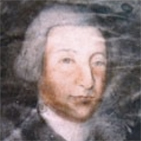
Aaron Lopez, Sephardic Jew of European ancestry born in Iberia. When he lived in Portugal, he was categorized as a “Cristão-Novo” (New Christian) and this limited his prospects and made him more likely to called before the Inquisition on suspicion of heresy. Officially he wouldn’t have been allowed to settle in the Spanish colonies. After he arrived in Newport (RI), he was categorized as white but did not have full rights. At first the Rhode Island court refused his petition to become a naturalized citizen, but he was able to achieve this goal by going to nearby Massachusetts. This allowed him to trade and pass along property, but he was still not hold office, serve in Parliament, or accept land grants from the Crown. Image Source.
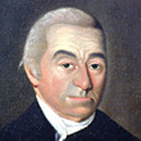
Jacob Rodriguez Rivera, Sephardic Jew of European ancestry born in Iberia. He is the first cousin and father-in-law of Aaron Lopez. When he lived in Portugal, he was categorized as a “Cristão-Novo” (New Christian) and this limited his prospects and made him more likely to called before the Inquisition on suspicion of heresy. Officially he wouldn’t have been allowed to settle in the Spanish colonies. After he arrived in New York, he was categorized as white but did not have full rights. After he became naturalized, he was able to trade and pass along property, but he was still not hold office, serve in Parliament, or accept land grants from the Crown. Although prior to 1737 Jews had the right to vote and bear witness in New York, they lost that right in 1737 and would not gain it back until after independence Image Source.
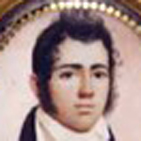
Isaac Lopez Brandon, Sephardic Jew of mixed European and African ancestry. Born in Barbados. Isaac was born enslaved and as a child in Barbados he was assigned the race of “colored.” His father was Abraham Rordrigues Brandon (see below), a Sephardic Jew, and his mother Esther Gill/Lopez was of mixed British, African, and possibly Jewish ancestry. Like her son, Esther Gill/Lopez was born enslaved to the Lopez family. In 1801, Isaac’s father paid to have him manumitted. In 1812, Isaac decided to convert to Judaism in Suriname. While in Suriname, Isaac was labelled “colored” by the British census. If his parents had been legally married, however, he would have been considered white in Suriname (though not in Barbados). He returned to Barbados where he became entangled in the battle for Jewish rights. In the 1820s, he moved to New York where he married a European Ashkenazi Jewess. He had full rights in the New York synagogue and was relabelled white by the U.S. government. When he travelled back Barbados for work, however, he was still considered a Jew of color. Image Source.
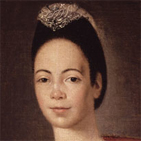
Sarah Lopez, Sephardic Jew of European ancestry. Wife of Aaron Lopez and daughter of Jacob Rodriguez Rivera. Born in the Americas. Considered white by the U.S. census. Sarah had no rights regarding voting and serving in government because she was female. She did, however, pass along her whiteness to her children. Consequently her sons were able to vote. Also after she was widowed, her whiteness allowed her to be able to manage her husband’s property and her easy access to a legal marriage allowed her to inherit. Image source.
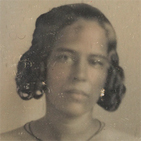
Maria Louisa de Hart, of mixed Sephardic and African, and European ancestry. Born in Suriname. Maria’s father Mozes Meijer de Hart was an European Ashkenazi Jewish and her mother Carolina Petronella van de Hart was of mixed European and African, and possibly Jewish ancestry. Like her mother, Maria was born enslaved to Mozes Meijer de Hart, but was freed Carolina and her children (including Maria) in 1827, about 18 years before this photo was taken.) In 1840, Maria’s parents legally married. This meant that if Petronella was 3/4 white, Maria would have had her race reassigned and become white upon her parents’ marriage. Although her father was Jewish, appears to have identified as Protestant. As of 1827, free people of color had legal rights in Suriname, but as a woman, Maria could not vote or hold office. Image Source.
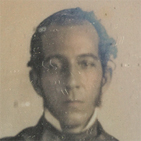
Johannes Ellis, of European and African descent. Born in Ghana (West Africa). Johannes was the “natural” son of Governor Abraham de Veer, a Dutch protestant and a Ghanese mother. Johannes came with his father and half brother to Suriname where he became a captain of the militia. His parents did not marry as his father had a Dutch wife. Although technically after 1827, free people of color had legal rights in Suriname, this did not always play out on the ground. As Jessica Roitman notes, “free people of color fell into a sort of ‘legal limbo’ on the Dutch islands, with no clear distinction between the rights of the enslaved and the free.” Before slavery came to an end in Suriname, Johannes and his wife moved to Amsterdam. It is unclear how his race was understood in the Netherlands, but it doesn’t seem to have hindered the family socially. One of his and Maria’s sons became a cabinet member in the Dutch government. Image Source.

Abraham Rodriguez Brandon, Sephardic Jew of European descent. Father of Isaac Lopez Brandon. Born in either Barbados or London. Although Abraham was considered white in Barbados, he was not able to vote or hold office unless he was willing to convert to Anglicanism. In 1819-20 he signed a petition to the all Anglican legislature trying to make the Barbadian synagogue a vestry. If it passed, the petition would allow Jews to vote and hold office without converting, as long as they owned a certain amount of property, which Abraham did. The petition, however, backfired as it led to the Anglicans insisting that Abraham’s son Isaac Lopez Brandon (above) be demoted to a non-voting member of the congregation. While the “Vestry Bill” passed, the King vetoed it anyway. In the end, Jews and free men of color received the right to vote at the same time, in 1831. For Abraham it was a little too late: he died in 1832. Image Source.

Sarah Brandon Moses, Sephardic Jew of mixed European and African ancestry. Born enslaved in Barbados. Sarah is the daughter of Abraham Rordrigues Brandon (see above), a Sephardic Jew, and Esther Gill/Lopez was of mixed British, African, and possibly Jewish ancestry. Like her brother Isaac Lopez Brandon (above), Sarah was born enslaved to the Lopez family. In 1801, Sarah’s father paid to have her manumitted. Like her brother Isaac, Sarah was considered a person of color in both Barbados and Suriname. After converting to Judaism in Suriname, Sarah travelled to London where she attended an elite Sephardic boarding school. There she married New Yok Ashkenazi Jew Joshua Moses. Because she married in London, her race was left unmarked in her ketubah (marriage contract). After she came to London with her husband, she was reassigned the race of white by the New York census. While as a woman she could not use her whiteness to vote, she passed her new racial assignment along to her children. Her sons did vote and served in the white militia during the Mexican American and Civil Wars. Image Source.
Which of these did you guess “correctly”? Why did you make the guesses you did? Did you assume if someone was Jewish they were of purely European descent? Given the above information, what problems do you see with Benoit’s categories? What do you make of other people’s responses to the polls? To understand more about why Benoit’s categories are flawed, read Jared Diamond’s “Race Without Color.”
Resources
Ben-Ur, Aviva. Jewish Autonomy in a Slave Society: Suriname in the Atlantic World, 1651-1825, 2020.
Boom, Mattie. The First Photograph from Suriname: a Portrait of the Nineteenth-century Elite in the West Indies. Amsterdam : Rijksmuseum, 2014.
Hoberman, Michael, Laura Leibman, and Hilit Surowitz-Israel. Jews in the Americas, 1776-1826. London: Taylor & Francis Group, 2017.
Hondius, Dienke. Blackness in Western Europe: Racial Patterns of Paternalism and Exclusion. Routledge, 2017.
Kohler, Max J. “CIVIL STATUS OF THE JEWS IN COLONIAL NEW YORK.” Publications of the American Jewish Historical Society, no. 6 (1897): 81-106. http://www.jstor.org.proxy.library.reed.edu/stable/43058641.
Leibman, Laura Arnold. The Art of the Jewish Family: A History of Women in Early New York in Five Objects. BGC, 2020.
Leibman, Laura Arnold. Once We Were Slaves. Oxford University Press, 2021.
Leibman, Laura Arnold, and Sam May. “Making Jews: Race, Gender and Identity in Barbados in the Age of Emancipation.” American Jewish History 99, no. 1 (2015): 1–26. https://doi.org/10.1353/ajh.2015.0010.
Marcus, Jacob Rader. The Jew in the American World: A Source Book. Wayne State University Press, 1996.
Roitman, Jessica Vance. “‘A Mass of Mestiezen, Castiezen, and Mulatten’: Contending with Color in the Netherlands Antilles, 1750–1850.” Atlantic Studies 14, no. 3 (July 3, 2017): 399–417. https://doi.org/10.1080/14788810.2017.1318022.
Vink, Wieke. Creole Jews: Negotiating Community in Colonial Suriname. Leiden, The Netherlands: KITLV Press, 2010.
